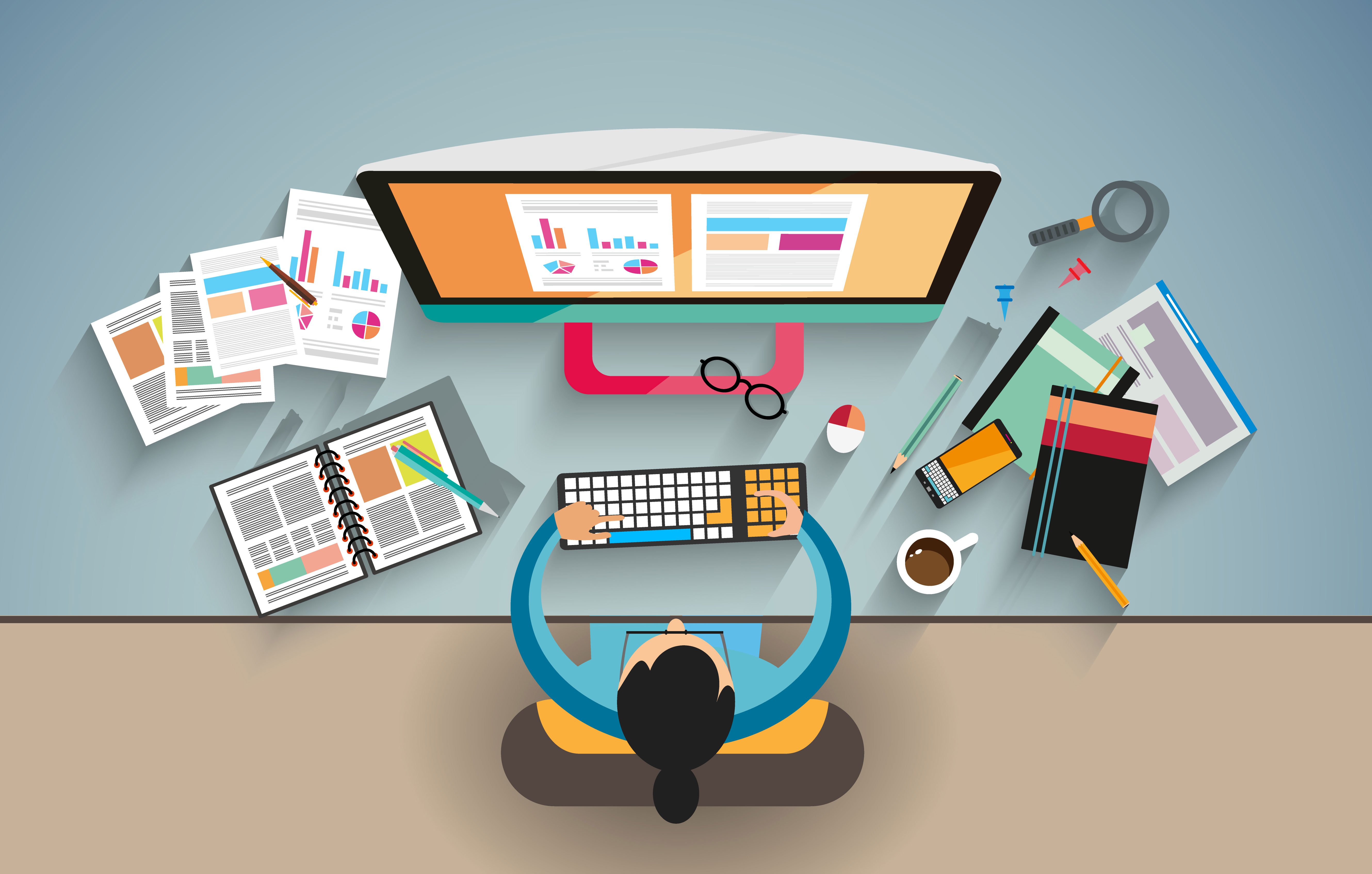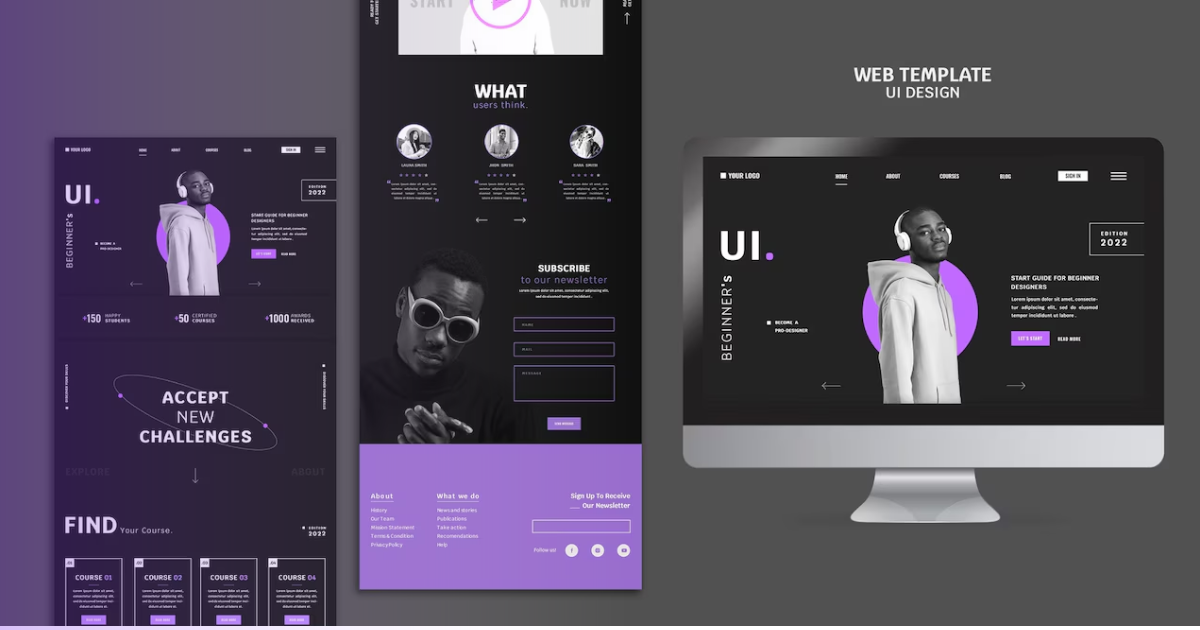Aligned Position Web Design: Building Responsive, Mobile-Friendly Websites for Modern Users
Aligned Position Web Design: Building Responsive, Mobile-Friendly Websites for Modern Users
Blog Article
The Most Effective Types of Website Design to Boost Customer Experience and Involvement
In the ever-evolving landscape of digital interaction, the effectiveness of Web design significantly affects customer experience and interaction. Various style methods, such as minimal, responsive, and interactive layouts, each deal one-of-a-kind advantages that can cater to varied individual demands.
Minimal Website Design
As electronic landscapes end up being significantly chaotic, minimal Web design has actually emerged as a powerful approach to improving customer experience. This style viewpoint focuses on simpleness, concentrating on essential elements while getting rid of unnecessary interruptions. By using sufficient white room, uncomplicated navigating, and a limited color combination, minimalist design fosters clarity and routes customer attention to key material.
The core principle of minimal website design is to produce a seamless interaction for users. By reducing cognitive tons, users can quickly understand details without feeling overwhelmed. This direct technique not just boosts usability yet also motivates involvement, as visitors are most likely to check out a website that is visually attractive and very easy to browse.
Furthermore, minimal layout frequently emphasizes typography and images, making use of these elements strategically to convey messages efficiently. This focus on vital parts can boost brand name identity and develop an unforgettable user experience. Fundamentally, minimalist website design is not just a fad; it is a thoughtful technique that identifies the relevance of user-centered style. By removing away peripheral elements, designers can develop a more engaging, effective, and pleasurable Web experience for all customers.
Receptive Web Style
In today's varied electronic setting, receptive Web design has actually come to be important for creating a seamless customer experience throughout a wide variety of tools. As individuals gain access to websites on smartphones, laptop computers, tablet computers, and desktop computers, the ability of a web site to adjust its format and content to various display sizes and resolutions is critical.
Responsive website design employs adaptable grids, pictures, and CSS media questions to make sure that Web content is offered ideally, no matter the device made use of. This technique not only boosts the visual appeal of a web site yet also significantly boosts usability. Individuals are most likely to engage with a website that uses a regular experience, as it removes the stress of having to focus or scroll exceedingly.
By adopting receptive layout, companies can improve their exposure and get to a broader audience. In recap, receptive Web design is a basic method that enhances customer experience, engagement, and general satisfaction.
Interactive Web Style
Responsive website design lays the groundwork for boosting customer experience, however interactive website design takes this an action further by engaging users in an extra vibrant means - Aligned Position Web Design. By incorporating components such as computer animations, clickable prototypes, and real-time comments, interactive Web style captivates users, attracting them right into a richer surfing experience
This method not only cultivates interaction however also urges users to explore content proactively instead of passively eating it. Techniques such discover this as gamification, where individuals make incentives for finishing jobs, can considerably improve the time invested on a site and boost general fulfillment. Additionally, interactive attributes can streamline complex information, making it much more absorbable and enjoyable.

Incorporating interactive layout components can likewise cause greater conversion prices, as individuals are more probable to engage with a site that actively includes them. Aligned Position Web Design. Eventually, interactive website design transforms individual experiences right into memorable trips, making sure that visitors return time after time
Apartment Design
Identified by its minimalistic method, level style emphasizes simpleness and functionality, removing away unnecessary elements and concentrating on essential attributes. This layout philosophy prioritizes functionality, making sure that users can browse user interfaces easily and efficiency. By using a clean visual, flat layout eliminates the mess usually found in extra ornate designs, thus boosting individual concentrate on web content and functionality.
The characteristic of flat design depends on its use strong colors, basic typography, and geometric shapes. These elements contribute to an aesthetically enticing user interface that is both approachable and modern-day. Additionally, level layout promotes a feeling of clearness, enabling individuals to recognize essential activities and info without diversion.
Furthermore, level layout is specifically effective in receptive website design, as its simplicity converts well throughout numerous gadgets and display dimensions. The lack of elaborate textures and gradients lessens loading times, which is important for maintaining individual engagement. As electronic landscapes continue to progress, flat layout remains a relevant option for creating user-friendly web sites that enhance overall experience. By concentrating on important features, flat layout not only fulfills customer needs yet likewise encourages smooth communication, making it an essential component of effective website design strategies.
Adaptive Web Design
Flexible Web style tailors the customer experience by creating multiple dealt with designs tailored to different display dimensions and tools. Unlike responsive layout, which fluidly adjusts a solitary format, flexible layout utilizes distinct layouts for particular breakpoints, making certain ideal discussion site web on different systems. This strategy enables designers to concentrate on the one-of-a-kind qualities of each device, boosting functionality by supplying specifically what customers need based on their context.
Among the key benefits of adaptive Web style is its ability to optimize load times and performance. By serving customized web content and photos that fit the customer's tool, websites can minimize information usage and enhance loading rates. This is specifically useful for individuals with slower links or minimal data strategies.

Additionally, try here adaptive style facilitates a more regular and controlled branding experience. Given that developers produce several formats, they can make certain that the visual components line up with the brand's identification across different platforms - Aligned Position Web Design. This results in a natural individual experience, enhancing involvement and advertising customer retention
Verdict
Minimalist design promotes clearness and focus, while responsive layout ensures adaptability across various gadgets, promoting accessibility. Jointly, these layout approaches add to the development of user-friendly settings that not just improve contentment but additionally drive greater conversion rates, highlighting their essential relevance in contemporary Web design techniques.

Minimalist style cultivates clearness and emphasis, while responsive layout ensures adaptability throughout various devices, promoting accessibility. Jointly, these design comes close to contribute to the creation of straightforward atmospheres that not only improve contentment but likewise drive higher conversion prices, highlighting their essential relevance in contemporary Web layout strategies.
Report this page